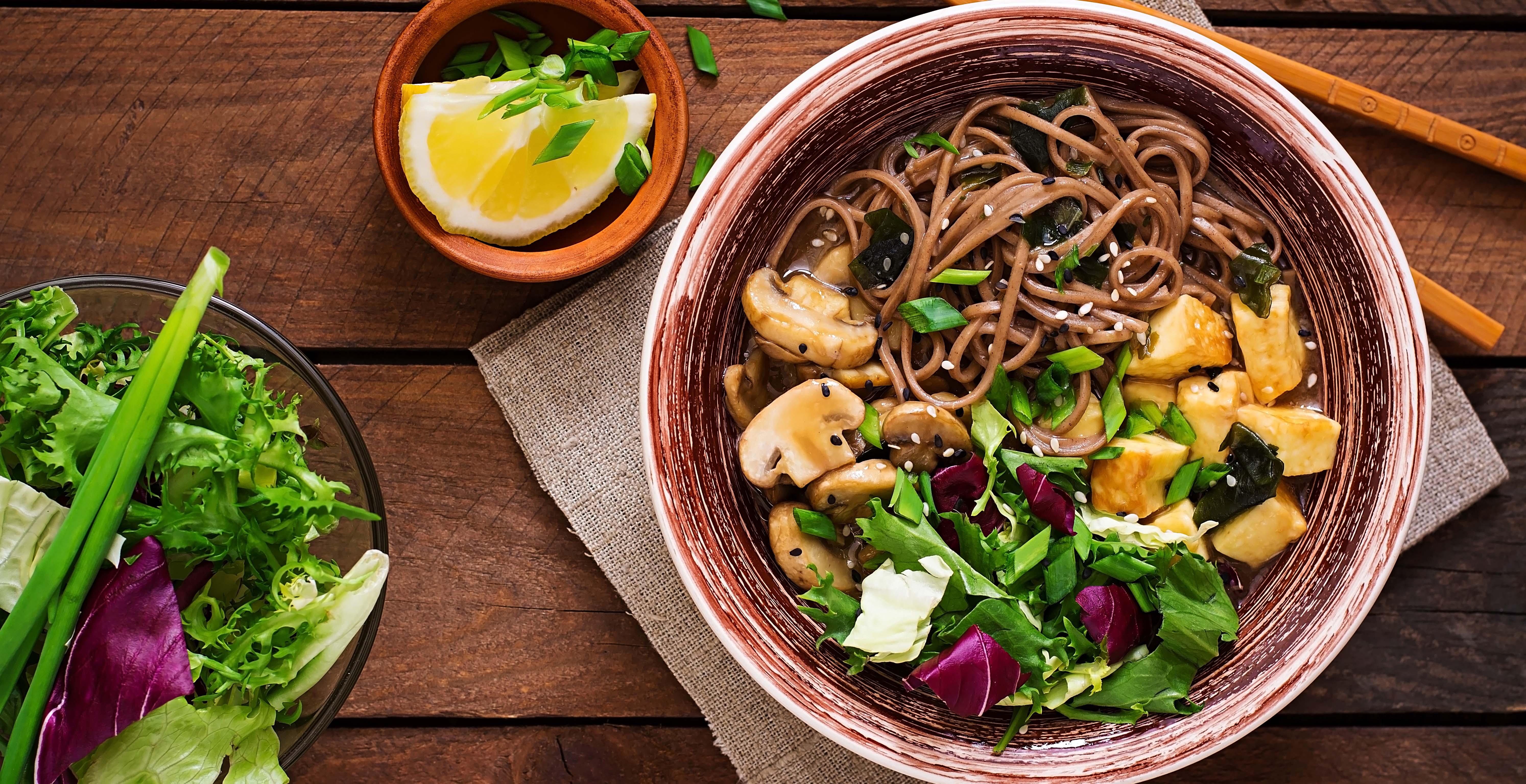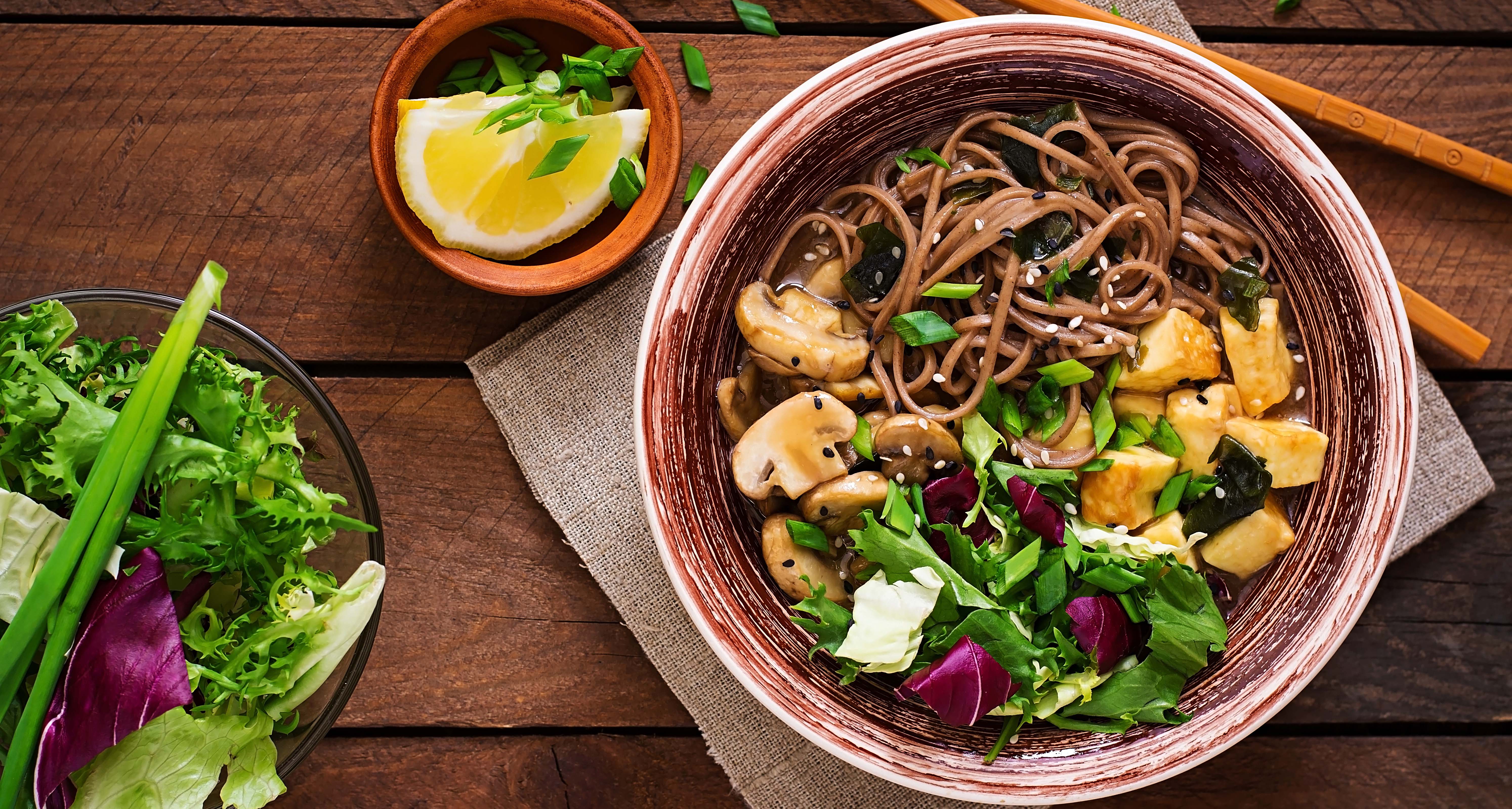5 Vegetarian Ingredients You Might Not Know About


The current surge of interest in vegetarian and vegan cooking means there has never has never been a better time to experiment with meatless recipes. Ingredients that were once difficult to find are now easily available at many large grocery chains and specialty shops across the country. Newfound enthusiasm for vegetarian and vegan cooking has led to the popularity of “Meatless Mondays,” a single day of the week dedicated to eating a meat-free diet, and vegetarian and vegan cuisine are enjoying a well-earned moment in the spotlight. Whether your goal is one meal per week or an overall change in diet, there are a multitude of delicious ingredients that will transform vegetarian recipes into 5-star meals even die-hard meat lovers will enjoy.
Soba noodles
Soba noodles, or buckwheat noodles as they are sometimes referred to, are thin strands of pasta made of buckwheat flour. Soba noodles are commonly used in Japan and have a subtle nutty taste, making them a good match for big savoury flavours. Soba noodles are generally gluten-free (check the packaging to make sure additional wheat flour hasn’t been added), and are high in protein and fibre. Soba noodles are traditionally used in soup as well as in chilled salads; the latter can be made at the beginning of the week and eaten all week long for a simple and nutritious meat-free meal.
Silken tofu
While most people are familiar with the firm tofu used in stir-fries and curries, silken tofu is still somewhat of a mystery in terms of what it is and how it can be used. Silken tofu is very soft with a custard-like texture and it can be found either refrigerated or as a shelf-stable product. Silken tofu can be added to smoothies and creamy desserts as a heart-healthy substitute for dairy products, blended it into salad dressings, and even used as a whole or partial substitute for eggs in a frittata.
Tempeh
Tempeh, a staple in Indonesian cooking, is made of fermented soy beans that have been pressed into cakes. Although tempeh might sound similar to tofu, tempeh has a much more pronounced nutty taste, a unique texture and higher amounts of protein due to the fact that the soybeans are left whole as they are fermented. Tempeh is very firm compared to tofu and must be crumbled or thinly sliced and then simmered or braised in a savoury broth before it can be eaten. Try using tempeh crumbled into chili or as a taco or burrito filling for a meatless twist on comfort food classics.
Miso
Miso paste is another ingredient traditionally used in Japanese cooking and is most commonly sold as either red aka miso, which has a very strong umami taste, or white shiro miso which is much lighter and sweet-tasting. Made of fermented soy beans, miso contains billions of healthy bacteria and minerals that are characteristic of fermented foods. Although miso paste is most often thought of as a base for soup, its distinct umami flavour packs a punch in other recipes as well. Use miso paste to make a thick broth to slow-braise mushrooms, tofu, tempeh, and other vegetables or make an ultra-savoury vegan gravy for mashed potatoes or biscuits.
Nutritional yeast
Nutritional yeast is an incredibly versatile ingredient that is typically used to add a “cheesy” flavour to vegan recipes. Made of deactivated yeast that has been dried into golden flakes, nutritional yeast is an excellent source of B vitamins which are sometimes difficult for vegans to find outside of taking supplements. Nutritional yeast can be added to non-dairy cheese sauce for a delicious vegan take on macaroni and cheese or it can be used to coat thin slices of tofu that can be baked and tucked into sandwiches. As a condiment, nutritional yeast makes an amazing topping for popcorn or it can be sprinkled onto salads to add flavour and extra nutrients.
